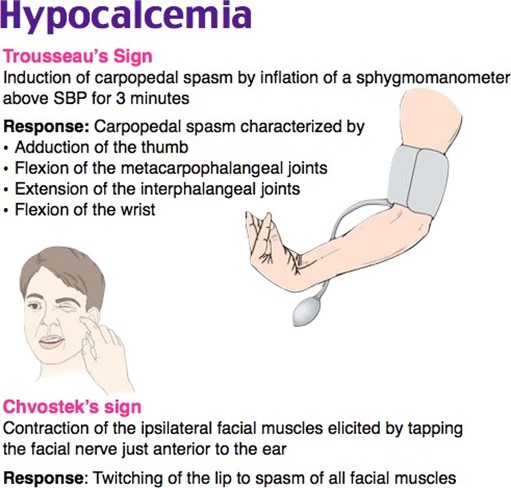A postoperative patient is diagnosed with fluid volume overload. What should the nurse expect to assess in this patient?
Distended neck veins.
Poor skin turgor.
Concentrated hemoglobin and hematocrit levels.
Decreased urine output.
The Correct Answer is A
Choice A rationale:
Fluid volume overload is an excess of fluid in the intravascular and/or interstitial spaces. One of the hallmark signs of fluid volume overload is distended neck veins, which indicates increased venous pressure due to the accumulation of fluid. The neck veins become more visible and prominent, especially when the patient is in a semi-Fowler's position.
Choice B rationale:
Poor skin turgor is a sign of dehydration, not fluid volume overload. It is characterized by the skin's inability to return to its normal position after being gently pinched. In fluid volume overload, the skin may become edematous and puffy, but it does not exhibit poor turgor.
Choice C rationale:
Concentrated hemoglobin and hematocrit levels are seen in conditions of dehydration or hemoconcentration, not in fluid volume overload. In fluid volume overload, there is excess fluid, which may lead to dilutional effects, resulting in decreased concentration of blood components.
Choice D rationale:
Decreased urine output is associated with fluid volume deficit (dehydration) rather than fluid volume overload. In fluid volume overload, there is often an increase in urine output as the body tries to eliminate the excess fluid.
Nursing Test Bank
Naxlex Comprehensive Predictor Exams
Related Questions
Correct Answer is ["C","D","E"]
Explanation
The correct answer is choiceC. Monitor the injection site for redness,D. Use an infusion controller for the IV, andE. Monitor fluid intake and output.
Choice A rationale:
Adding the ordered dose to the IV hanging is incorrect because potassium chloride should never be added to an already hanging IV solution due to the risk of uneven distribution and potential overdose.
Choice B rationale:
Administering the dose IV push over 3 minutes is incorrect because potassium chloride should never be given by direct IV injection.It must always be diluted and administered slowly to prevent cardiac complications.
Choice C rationale:
Monitoring the injection site for redness is correct because potassium chloride can cause irritation and phlebitis at the injection site.
Choice D rationale:
Using an infusion controller for the IV is correct because it ensures the potassium chloride is administered at a controlled rate, reducing the risk of rapid infusion and potential cardiac issues.
Choice E rationale:
Monitoring fluid intake and output is correct because it helps assess the patient’s overall fluid balance and detect any signs of fluid overload or deficit, which is crucial when administering potassium.
Correct Answer is ["A","B","C"]
Explanation
Choice A rationale:

The nurse considered contraction of facial muscles as a finding of hypocalcemia because it is associated with Chvostek's sign, which indicates neuromuscular irritability due to low calcium levels.
Choice B rationale:
Complaints of fingers tingling are indicative of hypocalcemia since tingling sensations (paresthesias) in the extremities can result from decreased calcium levels affecting nerve function.
Choice C rationale:
Carpal spasm with blood pressure measurement is known as Trousseau's sign and is associated with hypocalcemia. When the blood pressure cuff is inflated above systolic pressure, it can cause tetany in the hand if the calcium levels are low.
Choice D rationale:
Asking when foot numbness would go away does not directly relate to hypocalcemia or its symptoms. It is not a finding used to come to the conclusion of hypocalcemia in this scenario.
Choice E rationale:
The heart rate being 88 and regular does not directly indicate hypocalcemia. While hypocalcemia can lead to cardiac arrhythmias, a heart rate of 88 and regular is within the normal range and not a specific finding for hypocalcemia.
Whether you are a student looking to ace your exams or a practicing nurse seeking to enhance your expertise , our nursing education contents will empower you with the confidence and competence to make a difference in the lives of patients and become a respected leader in the healthcare field.
Visit Naxlex, invest in your future and unlock endless possibilities with our unparalleled nursing education contents today
Report Wrong Answer on the Current Question
Do you disagree with the answer? If yes, what is your expected answer? Explain.
Kindly be descriptive with the issue you are facing.
